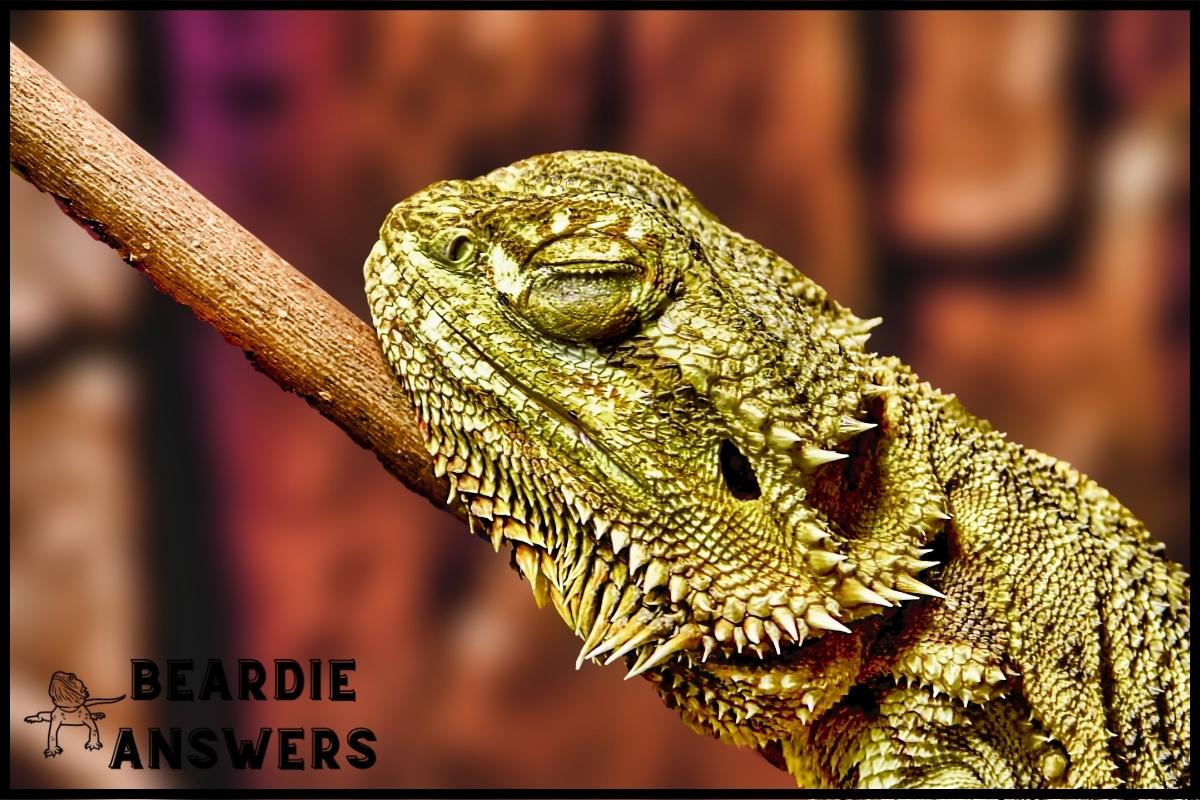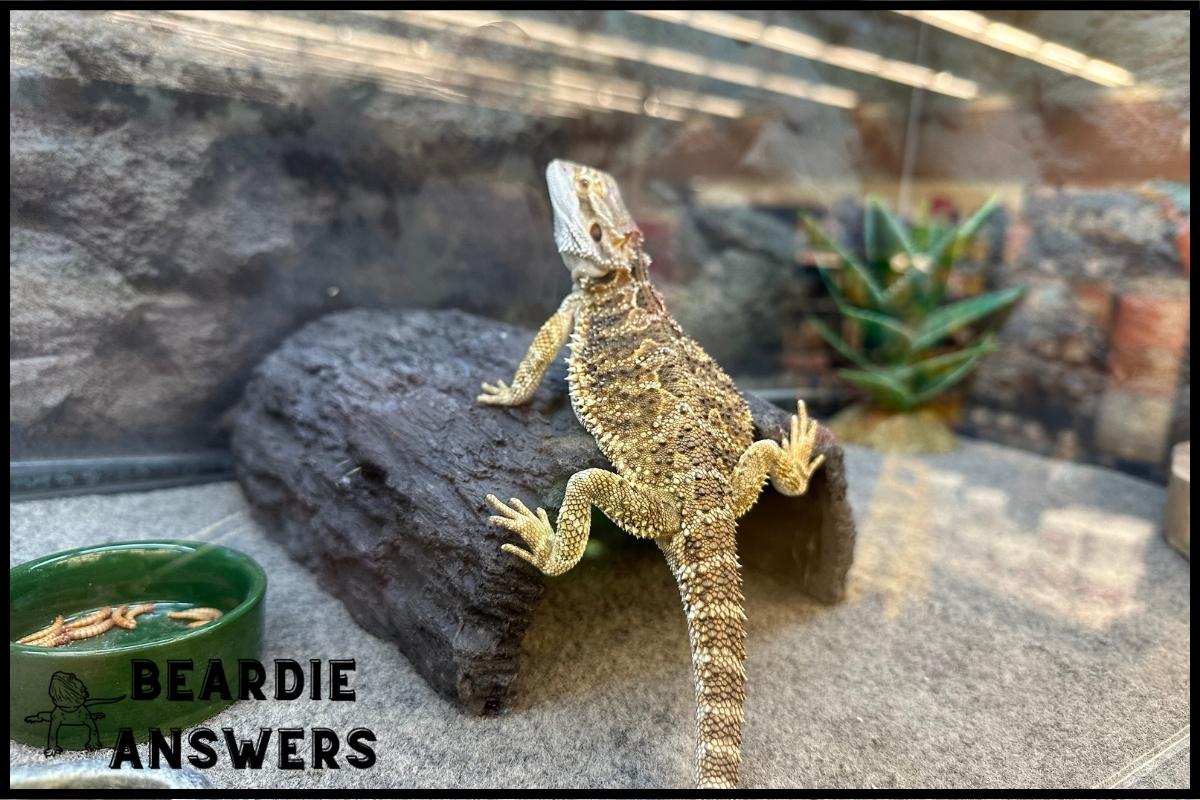[su_note note_color=”#eee”]
Bearded dragons are lovable and popular pets, but they require special care. One of the most important aspects of caring for a bearded dragon is understanding their molting process.
Molting occurs when they shed their skin as they grow, and it can be an uncomfortable experience. It’s essential that pet owners understand this process so they know how to properly care for their beloved lizard companion during the molt.
In this article, we’ll go over everything you need to know about the bearded dragon molting process.
What You'll Learn
The Process of Molting
Reptiles rely on a process known as molting to grow. Molting is an essential part of reptile biology that involves shedding the current skin for new and larger scales, plates, or feathers. It’s driven by environmental factors such as temperature and humidity levels, which can cause changes in the underlying skin structure.
The molting stages consist of several steps beginning with the loosening of the old skin followed by physical separation from its body. This phenomenon occurs repeatedly throughout their lifetime, allowing them to increase in size over time. Once complete, they will be equipped with a brand-new set of armor while simultaneously relieving any possible discomfort associated with growth spurts.
Transitioning into causes of molting now, it’s important to understand what drives this biological process so we can better care for our scaly friends.
Causes Of Molting
Signs of Molting can include changes in the reptile’s skin color, the appearance of blood spots on the old skin, and the shedding of old skin. Reasons for Molting usually involve the reptile growing and needing to shed its old skin to make room for the new skin.
Signs Of Molting
The signs of molting are very distinct and unmistakable. They include changes in the bearded dragon’s behavior, such as becoming less active or refusing food altogether.
Additionally, you’ll notice that they start to shed their skin–it will look like pieces of scales coming off at first but then it will turn into a full-body shedding process.
The molt cycle is triggered by an increase in humidity levels within the environment and typically takes place over several days or weeks.
During this time, your pet will go through three stages of shedding: softening and discoloration of old skin; shedding its outer layer; and finally reabsorbing underlying pigmentation for new growth.
Although uncomfortable for them, proper care during this period can help ease some of the discomfort experienced during the molting process.
Reasons For Molting
Molting is a natural process that occurs in many animals, and can be caused by a number of factors.
Chief among these are dietary needs, environmental factors, and stress levels.
If nutrient deficiencies occur or the environment isn’t suitable for their species, then molting may begin as the body tries to make up for those shortages.
Additionally, if your pet becomes too stressed due to changes in its habitat or handling, it could trigger an early molt cycle.
Taking steps to ensure they’re getting enough nutrition from their diet and providing them with a comfortable environment will go a long way towards preventing this situation from occurring.
With proper care and attention you can help keep your beardie healthy and reduce any potential discomfort during the molting period.
Signs Of Molting
Molting is a natural part of the bearded dragon’s growth process, but it can be uncomfortable. It’s important to understand the signs so you can provide your pet with extra care during this time.
Here are some common symptoms you should look out for:
- Mild itching – Your bearded dragon may start to itch as their skin begins to loosen and separate from their old shell.
- Darkening skin – As they shed, the new layer of skin underneath will start to appear darker than usual.
- Shedding patches – You might notice small patches of shedding in areas such as around their eyes or toes first before more extensive shedding starts happening all over their body.
It’s also important to keep an eye on the softness of your dragon’s shell during molting season. A softer than normal shell could indicate that your pet needs additional humidity levels in its environment to help them molt properly and comfortably.
Knowing these signs can help make sure you’re providing proper care for your beardie during its molting period. Next up we’ll discuss how best to do just that!
How To Care For Your Bearded Dragon During Molting
Taking good care of your bearded dragon during the molting process is important for its health and comfort. To make sure that it goes as smoothly as possible, you should adjust bathing frequency, environmental humidity, substrate choice, lighting requirements, and provide supplemental vitamins if needed.
Bathing a bearded dragon too often can be harmful to their skin so it’s best to stick with the same routine they were on before the molt began.
You should also monitor the temperature in your terrarium carefully – making sure that it isn’t too humid or dry.
Substrate choice is important because some substrates hold onto moisture more than others which could cause complications down the line.
Bearded dragons need specific amounts of light depending on their breed; choose an appropriate bulb based on this information.
Lastly, providing extra calcium supplements may help them during this time as well.
It’s critical to take all these precautions while your beardie is going through a molt in order to ensure that everything goes as smoothly as possible.
Properly caring for them will minimize potential complications associated with shed cycles…
Potential Complications
The process of molting can be a difficult one for bearded dragons, and it’s important to consider any potential complications that may arise.
Inadequate nutrition, shedding problems due to humidity levels or temperature fluctuations, and high stress levels are all issues that can increase the risk of complications during this transition period.
Poorly regulated environments can cause skin to become too brittle leading to excessive loss of blood from accidental tearing when the dragon tries to shed its skin. This often results in pain and discomfort while new layers of skin struggle to form underneath.
In addition, inadequate nutrition during this time is also detrimental as beardies need more protein than usual while they’re molting so their bodies have enough energy reserves for growing new tissue.
Without proper nutrients, growth becomes stunted which further exacerbates the issue. To make matters worse, if a bearded dragon goes through an unhealthy molt it could even lead them into a state of illness or disease.
It’s essential then that owners should take steps towards preventing any such occurrences by actively monitoring their pet’s environment for changes in temperature and humidity as well as providing adequate nutrition throughout the molt process.
Prevention And Treatment
To prevent and treat the discomfort associated with molting, it is important to understand a bearded dragon’s nutritional needs, humidity levels, temperature control, substrate choices, and light exposure.
Providing adequate nutrition can help reduce stress in a beardie during this time of growth. This includes offering them insects as well as providing both calcium and vitamin D3 supplements.
It’s also important to maintain proper humidity levels by misting regularly or using a humidifier if necessary. Temperature control should include an appropriate day/night cycle for warm and cool temperatures; having two basking spots that reach between 95-100F (35-38C) during the day will help support healthy shedding.
Additionally, choosing the right substrate is key; many experienced keepers suggest paper towels or reptile carpets instead of sand or other particulate substrates, which may cause skin irritation when ingested while grooming themselves.
Finally, providing proper light exposure is essential to ensure your bearded dragon gets enough UVB rays from either natural sunlight or artificial lighting sources such as fluorescent bulbs or LED fixtures specifically made for reptiles. By taking these steps you can help your pet through this uncomfortable process without any issues.
Conclusion
Molting is an essential part of a bearded dragon’s life cycle, but it can be uncomfortable for them. It’s important to understand the signs and provide your pet with proper care during this process.
With some knowledge and preparation, you can help make sure your furry friend has a successful molting experience that won’t cause long-term harm or discomfort.
As we’ve seen, there are some potential complications associated with molting that require medical attention. By being aware of the warning signs, providing appropriate care while they molt, and addressing any issues quickly if they arise, you can ensure that your reptilian companion stays healthy and happy throughout their entire life cycle.
The truth is that molting isn’t something to fear – rather, it should be seen as an opportunity for growth and a celebration of the bond between you and your beloved pet!
After all, having a bearded dragon in your life is truly special – so why not take every chance you get to celebrate?

Hi! My name is Bryan, I am the “one behind the words” here are BeardieAnswers.com. I believe that providing quality care and nutrition is the best way to ensure the health of your pet. Every beardie is special and deserves the best care and attention. If you have questions about your bearded dragon, please don’t hesitate to ask! View My Full Author Page




